Ryan Hall's Blog, page 166
May 24, 2017
Carbs Vs. Fat Fueled Workouts: Which Is Better?

It’s dinnertime the night before a big race. What type of food you usually turn to? A giant bowl of angel-hair pasta with grilled chicken? A baked potato with veggies? A turkey sandwich piled onto a dense, crusty baguette?
As runners, we’re constantly told to load up on the carbs before and during long races. But as high-protein, low-carbohydrate diets are becoming more popular among health-conscious athletes, long-distance runners are starting to take different fueling approaches.
Ever heard of Tom Olson? He’s an ultramarathoner who runs 100 miles at a time. He’s competed in the Western States 100-Mile Endurance Run, the world’s oldest and most prestigious ultramarathon. In 2011, after loading up on carbs, Olson was plagued with cramps and stomach issues that forced him to take dozens of trailside bathroom breaks. A year later? He’d cut wheat and most carbohydrates from his diet. Fueled almost entirely by proteins and fats, he finished the 100-mile race in record time, beating the previous record by 21 minutes.
It’s worth noting that Olson may have been dealing with a gluten intolerance. But not only was he able to function athletically without carbs, but he thrived and improved.
The Paleo Diet
If you’re intrigued by the concept, consider picking up a copy of The Paleo Diet for Athletes, a book written by long-time runner Joe Friel and Dr. Loren Cordain. Friel argued that a carb-heavy diet was superior for high-endurance athletes like himself. Meanwhile Cordain suggested that a Paleo diet would be better. Also known as the caveman diet, Paleo emulates the food eaten by humans during the Paleolithic era by eliminating dairy, grains, legumes, processed oils, and refined sugar.
Friel committed to the Paleo diet to prove his point, and felt awful at first. But after a couple weeks, he found that he was able to hit distances he hadn’t been near in years. He recovered from long runs more quickly than before, as a result of more vitamins, minerals, and proteins from the new diet. A friendly argument and competition with a friend turned into a lifestyle change. It resulted in the publication of their book, which has been converting distance runners to the diet since 2005.
But even Friel and Cordain, who swear by the Paleo lifestyle, encourage runners to abandon the diet’s strict rules and adhere to carb-loading norms around race time, especially for a run more than 10 miles. A protein-rich, natural diet without processed foods could indeed improve your overall health and fitness. But as a runner, you may not want to give up those bowls of pasta and energy gels altogether.
What Works Best For You?
In short, here are a few things to keep in mind regarding high-carb vs. high-protein diets as a runner:
Everyone’s body is different and responds to fuel a little differently. Pay attention to what works for you.
If you decide to make a big nutritional change, do your research. Be aware of potential side effects and keep an eye on how your body responds to changes.
Don’t make any drastic changes right before a race. Let your body get used to a new diet before you tackle a long distance.
Related: The Paleo Diet: Right For Runners
The post Carbs Vs. Fat Fueled Workouts: Which Is Better? appeared first on Competitor.com.
The Truth About Protein Powders
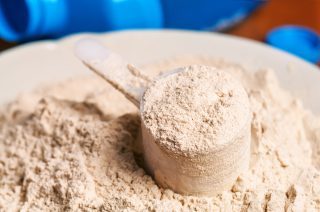
It’s no surprise – our society is protein-obsessed. Everybody is worried about somehow being protein deficient. (That ain’t gonna happen, folks!) And big food companies keep feeding the frenzy – high-protein Cheerios, anyone? Don’t be duped by clever marketing.
This misconception is particularly rampant among the gym crowd. People think they need more protein to build bigger muscles. Sorry, muscle is built in the gym, not in the kitchen. Regardless, the sale of protein powders and shakes has skyrocketed in recent years. Not only are these shakes completely unnecessary, you may be doing more harm than good. Excess protein, particularly animal protein, has been shown to cause some major problems. It accelerates the aging process. Any excess that your body is not using either gets stored as fat or eliminated through the kidneys, causing a leaching of calcium and kidney stones.
How much protein do we need?
The Institute of Medicine recommends that adults consume 0.8 grams of protein for every kilogram of ideal body weight per day. Some protein supplements have 50 grams per shake!
Athletes who work out 12 hours or more per week should increase their protein intake to 1.37 grams per kilo of body weight. Even those athletes do not need to supplement with protein powder, though. Ditch the protein powders and look to whole plant foods instead.
Go get some high-protein plant foods, such as sunflower seeds, hemp seeds and Mediterranean pine nuts. They can easily be added to a smoothie if that’s your go-to post-workout. These same foods can be incorporated into post-workout meals, along with lots of green vegetables, beans and whole grains, which are rich in micronutrients as well as protein.
The post The Truth About Protein Powders appeared first on Competitor.com.
May 23, 2017
7 Foods Runners Should Eat Every Day
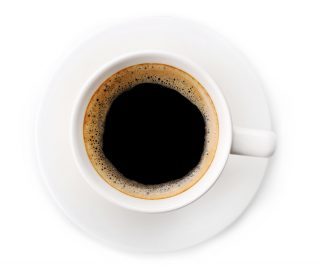
Whether you’re an elite athlete or a penguin plodder, a runner’s body has special nutritional needs. You just can’t do your best on a terrible diet.
The following healthy foods not only contribute to overall health but also pack an extra punch for running-related requirements, including increased energy, improved performance and quickened recovery. Read on to learn how they can help you and how you can incorporate them into your diet.

Oats
I know, I know, you’ve heard for ages all about how great oatmeal is for your body. But the benefits are plenty and proven. It lowers cholesterol, eases constipation, helps control blood sugar, reduces the risk of colon cancer and improves heart health. In addition, it is a great source of high-quality carbohydrates to fuel your workouts. And colloidal oatmeal applied topically helps many skin conditions such as eczema and allergic reactions.
Take note that packaged single-serving packets can be highly processed and high in sugar. Try making your oatmeal at home using minimal sugar or natural sweeteners such as stevia or honey. Don’t like good ole oatmeal? Add oats to healthy baked goods.

Yogurt
This creamy delight contains calcium for bone health and protein for muscle recovery, as well as other body-boosting nutrients. It also has good-for-your-gut probiotics that ease gastrointestinal discomfort and boost immunity. Greek yogurt has extra protein that is perfect for a post-run snack to replenish and rebuild those fatigued muscles.
Flavored yogurt tastes great on its own, but keep an eye out for excessive added sugar. You can get plain yogurt and sweeten at home with healthier alternatives and vanilla extract. Plain yogurt also makes a great substitute for sour cream. Try adding yogurt to your oatmeal for some heavenly creaminess, or use it in smoothies and shakes.

Chia seeds
These tiny little super seeds are loaded with body-loving nutrition. They contain omega-3 fatty acids, phosphorus, fiber, calcium, protein and quality carbs. Consequently these super specks can do wonders for your energy levels, helping you power through your day, as well as your sweat session.
But how exactly do you eat them? One popular method is to put them in water and drink them. They’re pretty much tasteless, but they “gel up” in liquid, which can make for an unpleasant slimy sensation. Fortunately, there are more palatable ways! You can make chia pudding, add to baked goods, mix into your oatmeal, sprinkle on a salad, add to smoothies or stir into yogurt.

Bananas
If there were ever a mascot food for runners, the banana would be it. These golden grails are packed with everything a runner needs. They are a prime source of easily digestible carbohydrates to power your run. Bananas are also rich in potassium for optimal muscle function and cramp prevention. They even contain probiotics for enhanced nutrient absorption. Plus they’re inexpensive, portable and delicious!
Don’t like bananas on their own? Try using in smoothies, spreading slices with peanut butter, slicing onto oatmeal or cereal, or making banana bread.

Avocados
There is so much green goodness packed into this powerhouse! You may know that avocados provide a good dose of healthy monounsaturated fats. They are also chock full of 20 vitamins and minerals that are beneficial for skin and eye health, immune function, cancer prevention and more. They even have more potassium than bananas for an electrolyte boost and cramp prevention. But did you know they can also reduce muscle and joint soreness? Avocados pack powerful anti-inflammatory properties strong enough to ease arthritis symptoms. These same effects can help your body recover after a hard workout.
Whether you put slices on a sandwich, smash into guacamole or top a salad with them, avocados are a smart choice. They are great in desserts!

Coffee
It’s a shame people think coffee a bad habit they should kick, because it is loaded with antioxidants. It is also proven to have protective effects against diabetes, Parkinson’s, Alzheimer’s, heart disease, stroke, various cancers and more. Of course there are the obvious energy effects. A fresh cup of joe in the morning is how most of America gets anything done. For runners, a jolt of java is the perfect pre-workout boost that allows you to go harder, faster and longer. The dose of caffeine is clinically proven to improve athletic performance — especially helpful for particularly tough workouts or on race day. Additionally, coffee helps reduce post-workout muscle soreness.
It’s really the additions we dump in that do the damage — the refined sugar, the fat-packed creamers and the chemical additives. But if you don’t like plain black coffee, there is no need to give up all the sweet creaminess! Just be smart about it. Use stevia, pure unrefined cane sugar or coconut sugar. Choose from a variety of milks to replace creamer. Buy an organic brand of coffee to ensure you are getting the best beans. All of this may mean you should give up your daily Starbucks visit, but at least you’ll save some money in the process.
Before you start downing a cup an hour throughout the day, though, note that experts recommend up to four cups per day for maximum disease-fighting and performance-boosting benefits. Moderation is key. Pick a level that is right for your unique body and doesn’t turn you into a shaky, nervous hummingbird!

Coconut oil
You have probably heard of all the benefits of coconut lately. This trend is probably not going away, and for good reason. Although there has been controversy over coconut fat, which is mostly saturated, it’s a different kind of saturated (medium-chain fatty acids) that is metabolized differently by the body. It actually can help you burn fat more efficiently and increase your metabolism. Coconut oil also helps fight infection, boost brain function, improve cholesterol levels and even treat neurological disorders. Of particular interest to runners, it has anti-inflammatory and pain-relieving properties to soothe those sore muscles and joints. Bonus: Topically it works well as a moisturizer and natural sunscreen. Take note that these benefits have been found with pure organic virgin coconut oil, not the refined and processed kind, so read the label before you buy.
Obviously you probably won’t be eating coconut oil by the spoonful (yuck!), but you can add it to baked goods or use it as a cooking oil. My favorite way to consume it is to add a tablespoon to my coffee in the morning. Just don’t jump off the deep end and add it to everything — 1 to 2 tablespoons a day is plenty.
Try to increase your intake of these foods and see how you feel — in general and in your running life. It’s easier than you think, too. Start with some coffee with coconut oil in the morning, have oatmeal with chia seeds for breakfast, enjoy a banana before your run and refuel with a green avocado shake afterward. Boom! You’re covered for the day!
See more from Lindsay at Fit Mix Mom
The post 7 Foods Runners Should Eat Every Day appeared first on Competitor.com.
May 19, 2017
Ultrarunners To Compete In FKT Race On China’s Yuzhu Peak

Yuzhu Peak, Photo: Courtesy of Xtrail FKT Race
 Yuzhu Peak, Photo: Courtesy of Xtrail FKT Race
Yuzhu Peak, Photo: Courtesy of Xtrail FKT Race
The Xtrail FKT (Fastest Known Time) Race, which tops out at 20,420 feet above sea level, is the highest trail run in the world and will be held on May 20 on Yuzhu Peak in Tsinghai, China. To provide some perspective, that’s 184 feet higher than Denali and more than 1,000 feet up from Mount Kilimanjaro. Yuzhu Peak is about 10 kilometers east of Kunlun Pass and 160km from Golmud, the nearest population center in western China.
The event is organized by Xtrail Expedition Sports Co., Ltd. Founded in 2014 and based in Beijing, Xtrail organizes inclusive and dynamic options for the community of outdoor racing enthusiasts in China and abroad. Xtrail’s events include professional-level endurance races, including ultras and adventure races, urban outdoor events, and team-building adventure races for businesses and communities.
The Xtrail FKT is 12km in distance; all of it ascending to the summit and then returning to the basecamp start/finish at 18,375 feet. Much of the route is on snow and ice and the competitors will be equipped with crampons and ice axes, and will be on fixed ropes for the upper part of the course.
RELATED: Inside The FKT (Fastest Known Time) Trend
 A map of the 12km course/ascent. Photo: Courtesy of Xtrail FKT Race
A map of the 12km course/ascent. Photo: Courtesy of Xtrail FKT Race
The average weather temperature during this time of year is -5 degrees Celsius with the lower portion of the mountain being protected from winds that will likely confront the runners after they get past the first checkpoint’s protective ridge. The slope is relatively steady and safe, which is why Yuzhu is frequently used for high-altitude training in China.
The race field is limited to just ten people, including champion ultrarunners Stevie Kremer and Anna Frost.
After winning the all-women’s FKT event on Yuzhu Peak last year, Stevie Kremer is returning for a second time. Kremer said she loved last year’s upper rope and crampon section because it was new and unique to her. “I have never had to put real, legit mountaineering crampons on before, and since the mountain isn’t especially technical, it made my first-time experience really cool.”
New Zealand’s Anna Frost, winner of both the 2015 and 2016 Hardrock 100, was excited to be one of the athletes invited to compete in the FKT. “I love new challenges, new places and new events, so I was keen straight away. I knew Stevie had been the year before and she really loved it. So I was in, ” said Frost, who has been as high as 18,000 feet in the Himalayas.
Frost believes the FKT will help prepare for this summer’s Hardrock. “Every piece of training helps for Hardrock: steep days, longs days, short days, high days. It is all part of over strength and conditioning,” she said.
The post Ultrarunners To Compete In FKT Race On China’s Yuzhu Peak appeared first on Competitor.com.
Tech Buzz: First Look At Advanced Earphones, Fitness Trackers And Apps
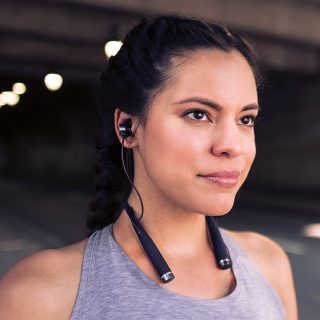
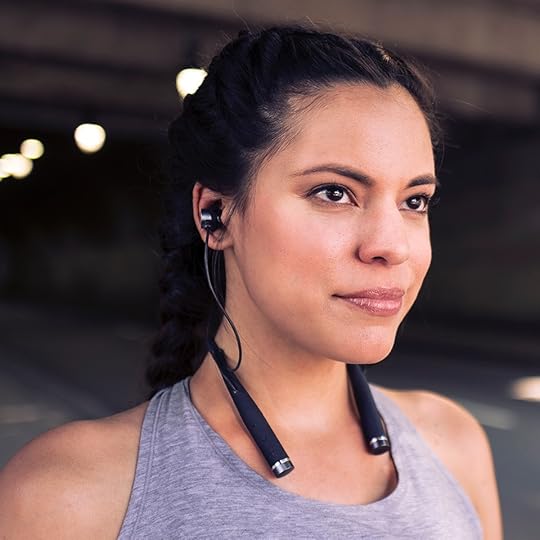
Life-Beam Vi BioSensing Earphones and Personal Training System, $249
iPhone and Android apps required. Available now.
getvi.com
Vi is the most funded fitness wearable on Kickstarter, raising almost $1.7 million to date. Life-Beam’s bio-sensing earphones combine sweat-proof performance with outstanding sound by Harman Kardan. They also have built-in sensors for in-ear heart rate, barometric altimeter, and accelerometers. The most unique feature, though, is a sophisticated artificial intelligence based training system driven by speech recognition. Life-Beam started in bio-sensing for military pilots, special forces and astronauts, so they have extreme condition sensing experience.
Vi is a collar style earphone. The earbuds are very light, comfortable and easy to quickly put on and remove. When not in use, magnets keep the earbuds fastened to each other and to the ends of the collars. The collar is covered in a soft neoprene-like material and sits comfortably on the neck without much slipping or bouncing. The battery life rating is strong compared to most wireless headphones, especially given the sensing. It can last up to 8 hours in active/training mode and 12 hours in music/answer calls mode.
Music and phone controls on the right collar arm are easy to reach. The Harman Kardan sound quality is outstanding, clear crisp and rich. Although it lacks a bit in bass, Life-Beam told us a bass boost option is coming in May.
The first generation release of Vi’s artificial intelligence is a bold new approach to run training, with a clear initial focus on beginner runners—simplicity and lots of friendly feedback. Runners can choose an overall goal, such as Run Faster, Lose Weight, Maintain or Improve Fitness. After an initial 120 minutes of running, Vi will define Effort Zones based on heart rate and other parameters such as age. These zones will change as your fitness progresses.
On the run, a phone is required to hear splits and other stats, such as the effort zone you are currently in. A very friendly, enthusiastic personal trainer responds to questions and talks you through the workout. Her chattiness level is configurable. By touching the right earbud and speaking after the tone, you can call up your heart rate, ask Vi to coach you on cadence via a pleasant beat over your music, get an update on the run, start a Spotify Premium radio station based on the current song, or start/stop the effort level guide. In our testing, we found that the earbud touch did not function in driving rain but touch with sweaty fingers was generally fine.
RELATED: 5 Tech Trends You’ll See In 2017
The voice recognition cue, a descending tone, can be hard to hear. The Vi frequently missed our commands, especially in windy seaside conditions. This issue is being worked with an update in the May-June timeframe.
The in-ear heart rate sensing was decently accurate, but we did have occasional spikes and low readings. Vi is working on an interactive fit guide, key to reliable in-ear sensing, for an upcoming release. The earphone tech was designed so that firmware updates, even extensive ones, can be delivered “over the air.”
Life-Beam CEO Omri Yoffe told us his team of physiology-oriented data scientists are working hard on incorporating new insights into Vi’s artificial intelligence, with a focus on data already being captured by your phone’s built-in health and other apps. These could include sleep, weight, heart rate trends, overall steps and weather. With this data, Vi will try to tailor its workout advice and coaching to a more personalized picture of your status and environment. While Vi is focused on beginner runners in its first release, future releases will provide the option of training plans and more data options.
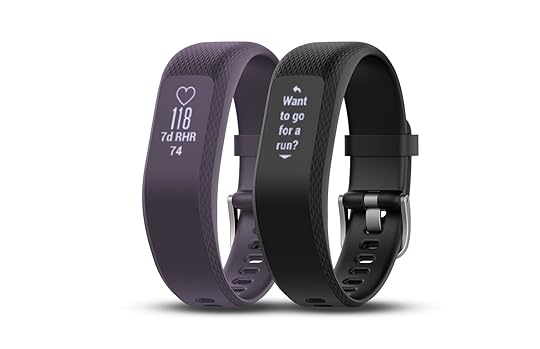
Garmin Vívosmart 3, $140
iPhone and Android apps required. Available now.
garmin.com
The Vívosmart 3 is a great smartband. It is discreet and a marvel of highly functional miniaturization. For Garmin fans, it can serve as a 24/7 compliment to workout-focused Garmin GPS watches.
The new Vívosmart 3 goes head-to-head with the Fitbit Alta HR. The Vívosmart costs $10 less, with a thinner, lighter band and a slightly wider activity and heart rate display. It also packs in phone notifications, answer/find phone, movement based sleep tracking, and music control. The Alta has seven days of battery life versus five for the Vívosmart. But the Garmin is swim-ready, whereas the Fitbit is not. Unlike the fashion-forward Fitbit, the Vívosmart does not try to be a thin accessory or watch. It is all about being a discreet presence on your wrist. The band is only available in black or purple. The OLED display is protected by a matte material that was easy to scroll and touch when testing. It blends into the wrist band with no seams or metal accents.
Garmin has clearly intended the Vívosmart to be a complement to a more full featured Garmin watch. Data from both Garmin devices is synchronized via Garmin Connect. This means you can use a Garmin watch to track your runs and then wear the smartband to track everything else, with all of the data ending up in one place.
The band will estimate your VO2 max and stress levels using Garmin’s 24/7 Elevate heart rate sensing. We especially like viewing and learning the overall daily stress score, which is determined by sampling heart rate periodically throughout the day and continuously in workouts. Like the Fitbit, the Garmin also has a breathing exercise widget.
The Vívosmart will attempt to automatically detect your activity using Move IQ. Strangely, it kicked in 2 miles into a run, but did not detect the very start of it. The band also thought our up-tempo pace was “Strength Training.” Strength Training is a new tracked activity which is supposed to include automatic rep counting, although we have not tested this yet.
Most runners will use something else to track distance and pace, given the band has no GPS and the screen is hard to see in sunlight. If you own a Garmin watch without heart rate on the wrist, or you dislike chest straps, you can rebroadcast heart rate from the band to your Garmin watch screen. You can also use heart rate zone alert. Set a heart rate zone prior to activity and the smartband will alert you with a vibration when you enter or leave that zone. We find that this type of cue keeps us from constantly staring at a screen and allows us to run more by feel.
RELATED: New Wearable Running Tech From Garmin, Fitbit And Polar
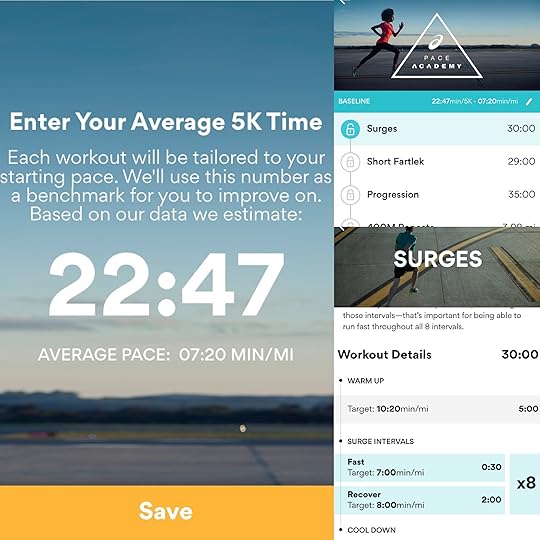
Runkeeper ASICS Pace Academy Challenge, Free
iPhone and Android
runkeeper.com
ASICS, through its Runkeeper app, recently introduced Challenge Workouts, a well-thought-out series of speed workouts designed to help you improve your 5K time. While 5K’s are not as popular as they used to be, competitors at any distance, even ultra runners, need high intensity speed work to build strength and leg turnover. From a benchmark 5K time, the app outlines your paces for a variety of speed workouts: surges, short fartlek, progression, 400-meter repeats and ladder fartlek. The workouts include warm up and cool down and have audio cues. It only takes 30-35 minutes per workout. This is meant to be a compliment to the rest of your training. It is not recommended to do the entire speed series but no other running.
A cycle may take around 3-4 weeks to complete. At the end of a cycle, test yourself in the 5K, whether it is an actual race or a time trial. From the results, a new benchmark is set and then runners can repeat the cycle with new pace goals. We like the relatively short time focus of this training plan, as well as its goal of improving short distance speed.
RELATED: Run Your Fastest 5K
The post Tech Buzz: First Look At Advanced Earphones, Fitness Trackers And Apps appeared first on Competitor.com.
May 18, 2017
How To Run And Train Through A Hot Summer
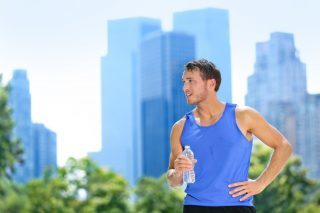
There is a reason why marathon season is either the fall or spring—it is way too hot in the summer!
Just like high altitudes, summer weather poses very real challenges to runners. The body simply cannot perform as well in high temperatures and humidity levels. Expectations need to be lowered and paces kept more reasonable.
To overcome those challenges, runners need a careful training approach that strategically uses timing, gear and an understanding of the specific reasons why it’s so hard to run in the heat. With successful summer training, runners can set themselves up for an even better fall racing season.
Why is running in the heat so difficult?
Summer training is hard for a variety of reasons that include temperature, humidity, and sun exposure.
Heat is clearly the largest obstacle. Hot weather raises the body’s core temperature, making running feel harder. Your RPE (rating of perceived exertion) will skyrocket.
Humidity is also a challenge. High levels of humidity prevent sweat from evaporating from our skin—a potent cooling mechanism. But even low levels of humidity, often felt in more arid environments, make running difficult because they increase fluid loss and dehydration. This leads to thicker blood, requiring more energy to pump the same amount. The condition is often called cardiac drift, where the heart needs to pump more quickly and forcefully to move viscous blood.
These unfortunate realities of summer training mean that runners will need to slow down to maintain the same effort.
RELATED: 5 Ways Heat Affects Running Performance
Beware the dangers of running in summer
Summer running therefore has risks. A variety of heat illnesses can strike any runner who’s too aggressive on a hot July day, so it’s critical to understand the warning signs.
Heat cramps are muscle cramps caused by large fluid and electrolyte losses. They’re much more common after running than during, but they’re not serious. Stay hydrated and consume enough electrolytes with sports drinks or fruit.
Dehydration is common—and luckily, it is often not very serious. It’s still safe to lose up to 4 percent of your bodyweight during exercise! But any more than that and you risk dizziness, fatigue, and disorientation. Always make sure to start every run adequately hydrated. Drink 4-8 ounces of water or sports drink per hour during longer runs, and replace lost fluids as quickly as possible after finishing.
Heat exhaustion is a combination of dehydration, headache, nausea, and a high core body temperature of up to 104 degrees. If you experience these symptoms, stop running and get inside to cooler temperatures away from the sun. Rehydrate as fast as possible!
Heat stroke is the most serious of the heat illnesses and presents with a core body temperature of 105 degrees or more. The body shuts down even more so than during heat exhaustion, with symptoms of disorientation, clumsiness, confusion, poor balance, and often a lack of sweating. Get medical attention immediately. You’ll likely need to be cooled with a cold bath or ice.
How to make summer training bearable
Despite the drawbacks of running in the summer, it’s a great time to be outside celebrating the capabilities of the human body. Just be careful! Here are seven ways to make running in the heat more bearable:
1. Run by effort, not pace. Your body only understands effort anyway.
2. Run early when the temperature is lowest and the sun is weakest.
3. Run trails, where there is ample shade and no asphalt to radiate the sun’s energy back to your body.
4. Lower your expectations. In adverse environments, performances won’t be as impressive.
5. Dress appropriately with synthetic fabric that doesn’t absorb sweat. Light colors will also reflect, rather than absorb, the sun’s energy.
6. Always start each run properly hydrated. If you run first thing in the morning, drink a big glass of water or sports drink before getting out of bed.
7. Carry fluids with you for runs longer than 60-90 minutes (or run near public water drinking fountains). If you can find a sprinkler to run through, all the better!
RELATED: Getting Your Body Used To The Heat—Inside And Out
The advantages of running during summer
Despite the disadvantages of summer running, there are also many benefits that will make you a more efficient and faster runner. Not only does the body get better at dissipating heat and conserving electrolytes, but it produces more red blood cells and becomes more efficient at controlling its core temperature.
These positive adaptations help you perform better in hot conditions. But they also make you perform even better in cooler temperatures, making autumn one of the best opportunities to race fast.
Embrace the heat—cautiously and with prudence—and there’s no doubt you’ll be ready to race new personal bests this fall season!
The post How To Run And Train Through A Hot Summer appeared first on Competitor.com.
Nike Lights Up The Night With First LED Running Track
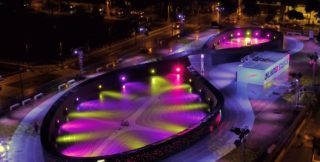
Nike is taking a nighttime approach to track running with its interactive pop-up track in Manila, Philippines. They’re calling it “the world’s first LED running track,” and runners can participate in a virtual race against themselves on it.
How does it work? The 200-meter long stadium is constructed of a wall of LED screens in the shape of a shoe, which projects an avatar of yourself after running an initial lap time and while donning a sensor on your shoe. Runners can then compete against their avatar around the track with personalized lap-by-lap feedback on pacing and other stats.
Forget stopwatches, this is the track of the future.
RELATED: Nike Unveils Shoes Designed to Run a Sub-2-Hour Marathon
The post Nike Lights Up The Night With First LED Running Track appeared first on Competitor.com.
May 17, 2017
What You Need To Know About Wrist-Based Mapping In GPS Watches
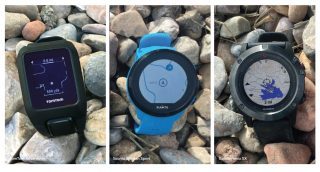
New technology helps make discovering great runs anywhere in the world increasingly easy. Lots of new GPS watches now not only track the usual run stats but can help show the way, with deep mapping and even turn-by-turn navigation.
How does GPS-based mapping work?
GPS watches and our phones receive signals from a constellation of satellites designed to provide accurate locations worldwide. Your devices keep track of your exact location and determine your pace and distance. The most common format for location data is called GPX. GPX format files contain the data to create tracks or routes of where you or others went. If you then import them into a compatible device, they can be followed.
Where can I find routes and courses to plan my adventures?
Strava is a great resource, with millions of runs, rides, and other activities recorded worldwide. They are discoverable by location and by name. For example: a race, trail or athlete. Strava also has heatmaps showing the most popular runs for a given location. Meanwhile, Suunto’s Movescount also has worldwide maps of popular routes for all sorts of activities, easily downloadable—no Suunto watch or account required. All Strava and Movescount runs, rides and other tracked routes are easily exported as GPX files.
RELATED: 7 Great Apps To Track Your Running Data
Wrist-based maps
GPS watches including the new Garmin fenix 5X ($700) and Casio Pro Trek WSD-F20 ($500) can display maps without a phone signal. The maps are similar to what you can see on your phone, miniaturized.
With the groundbreaking Garmin fenix 5X you can import any GPX file to the watch—one you have created or one found elsewhere. Using its built-in base maps of all roads, you can get turn by turn directions for your route, with distances to the next turn, vibration alerts when it’s time to turn, ETA and distance to the finish—plus direction and distance to get back on course if you need. It can also suggest courses to follow of any distance and in any direction from where you are standing. It even includes built-in topographic maps of the entire U.S. Not a running watch, the hiking, cycling, paddling and skiing focused Android Wear Casio Pro Trek WSD-F20 has phone-free color maps and satellite views, weather trends from its sensors, altimeter and a compass. It’s best with an Android phone, as iOS functionality is limited.
GPS run watches such as the TomTom Adventurer ($350) as well as all TomTom Spark 3 ($130 and up), Polar V800 ($500), Suunto Spartan ($500 and up) and other watches in the fenix 5 series allow you to import GPX files to the watches. You see your position as a line relative to the route you loaded and want to follow. (Your other run stats are still available on other screens.) TomTom and the National Parks Foundation have released a curated National Parks trail routes for upload to the Adventurer, just in time for summer exploration.
Most of these watches also let you create a route by clicking off its segments on a map at their websites to create a route file you can upload to the watches.
RELATED: Wrist Bling—Advanced GPS Watches With Style
But Don’t Forget
While using these watches in the wilderness, always have a paper map, compass and the skills to use them. Tech does fail or run out of juice.
The post What You Need To Know About Wrist-Based Mapping In GPS Watches appeared first on Competitor.com.
14-Year-Old Completes Marathons In All 50 States
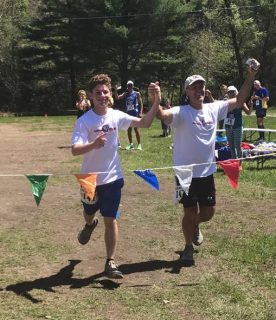
Nikolas Toocheck (left) finishes his 50-state marathon quest, along with his father, Dan Toocheck, at the Vermont Mainly Marathon.
Photo: Tara Toocheck.
On Sunday, Nikolas Toocheck crossed the finish line of his 57th marathon. The Vermont Mainly Marathon held on May 16, was the last race in his quest to run 26.2 in all 50 states. Toocheck has already completed marathons on all seven continents. And the most amazing part—he is only 14.
Toocheck didn’t accomplish this incredible goal just for himself. The teen runner started his Running the World for Children: Stateside campaign to raise funds and awareness for the Seva Foundation, a non-profit organization that provides critical vision care to people in need around the world.
The inspiration came from Nikolas’ father, Dan Toocheck, who is an eye doctor that has volunteered worldwide to provide care to people in developing countries. The cause meant a lot to Nikolas.
“I can’t imagine not being able to see,” he said, “and I really hope that I can help change that for a lot of kids.”
Through his campaign, he ticked off many other milestones. Nikolas became the youngest person to complete the Marine Corps Marathon in Washington D.C. His race in Colorado took place 9,300 feet above sea level. In the closing stretch of his pursuit, he ran six races in six weekends. The final weekend including two marathons on back-to-back days—the first in New Hampshire and the final race in Vermont.
This isn’t Nikolas’ first running campaign. At the age of 9, he embarked on his Seven Continents Journey, raising more than $42,000 for a non-profit called Operation Warm. The organization provides winter coats to children in need. It was through that philanthropic effort that a then 11-year-old Nikolas became the youngest person to complete a marathon on every continent.
If you want to learn more about Nikolas’ mission or want to donate to Seva, you can visit his website.
RELATED: The Worldwide Charity Run Where The Finish Line Chases You
The post 14-Year-Old Completes Marathons In All 50 States appeared first on Competitor.com.
This Speed Session Will Help You Run Fast And Relaxed
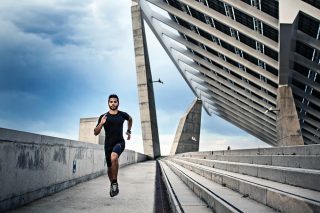
During the season it’s often difficult to set up your training plan with speed sessions specifically designed to tax only one part of your energy system. It’s just not a practical approach for athletes who may run only two or three times a week. We’re not solely runners who are able to do six to 10 run sessions each week with a lot of scope to build variety into our training sessions and devote entire workouts to focus on a single aspect.
The beauty of this session is that it will hit all of your various energy systems and still leave you fresh enough for your other sessions during the week. You don’t want to miss workouts in your training plan because of excessive fatigue.
This session hits the aerobic energy pathway, the bottom of the lactate threshold zone, the anaerobic system, and the neuromuscular pathways needed to run fast and relaxed. It doesn’t hit any of these intensities with a sledgehammer but works each enough to at least maintain and most likely expedite development of them all.
RELATED: Speed Workouts You Can Do Anywhere
The Workout
Time/Distance
Description
20 min.
Build to aerobic threshold over 5 min. and hold effort RPE 2
Tip: Go easy! It’s a bad idea to rush or cut short a run warm-up
5 x 2 min.
Moderately hard RPE 3
1 min. jogging recovery after each repTip: Remember this effort ranges from just under your LT to just above it.
5 x 20 sec.
Fast strides RPE 5
4 sec. walking recovery after each rep
5 min.
Cool down as time allows RPE 1
Rate Of Perceived Exertion Scale
Scale
Effort
Race Pace
RPE 1
Easy
Slower than normal training pace
RPE 2
Moderate
Normal training pace
RPE 3
Moderately Hard
Marathon pace
RPE 4
Hard
10K race pace
RPE 5
Very Hard
5K race pace and faster
Get Your Cadence Right
Keep track of your cadence during the warm-up. It should be close to your fast-run cadence (90+ per minute). If it’s much lower, then take smaller, quicker steps.
Check your cadence again during the 2-minute reps. It should definitely be in the 90+ per minute area for those. Fast feet!
Try to get your cadence even higher during the strides—but no straining! Relax and think about fast feet landing directly underneath you.
If you can get video of your running at all three intensities, it will be of huge value. Get footage from the front, behind and side.
RELATED: 3 Ways To Increase Running Cadence For Speed
The post This Speed Session Will Help You Run Fast And Relaxed appeared first on Competitor.com.
Ryan Hall's Blog
- Ryan Hall's profile
- 21 followers



